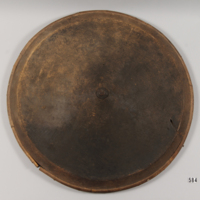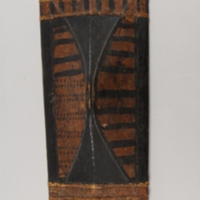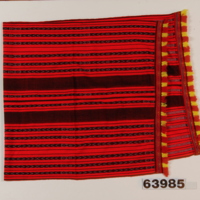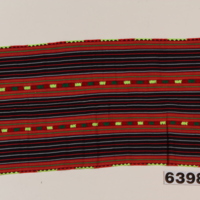Stringed Instrument (Rabab?)
Text
On 02.08.2007 a cloth bag with an inscription has been found "to 18396" and packed in the box. (Kaebelmann) RJM 18396.
Annotation (8/19/21)
According to Hans Brandeis, a recognized scholar of Philippine boat lutes, this musical instrucment is most likely an instrument called a RABAB (with variant names ROOBAB or RUBAB) by Farmer in 10th-century Arabic texts in contexts that indicate it was a bowed instrument (Farmer 1978-1:101-3). The rabab is one of the national instruments of Afghanistan now. Other references to the RABAB may be found in Die Musikinstrumente Indiens Und Indonesiens by Curt Sachs (p. 121).
According to Miner, Allyn, in the book Sitar and sarod in the 18th and 19th centuries published in 1997, this type of instrument and its variants did spread to South and Southeast Asia. (p. 61). To Brandeis however, this short-necked bowl lute string instrument was most likely not made in the Philippines, and perhaps was brought over to Mindanao by a visitor, traveler or merchant and collected from the area in 1906.
More studies of this rather unusual specimen would be needed to determine if this was an import from parts of Central Asia or is a localised variant of the Rabab. Further studies of the okir elements in this item and the inscriptions found in the small leather bag that accompanies the instrument may contribute to a better understanding of this particular item.
Share this



